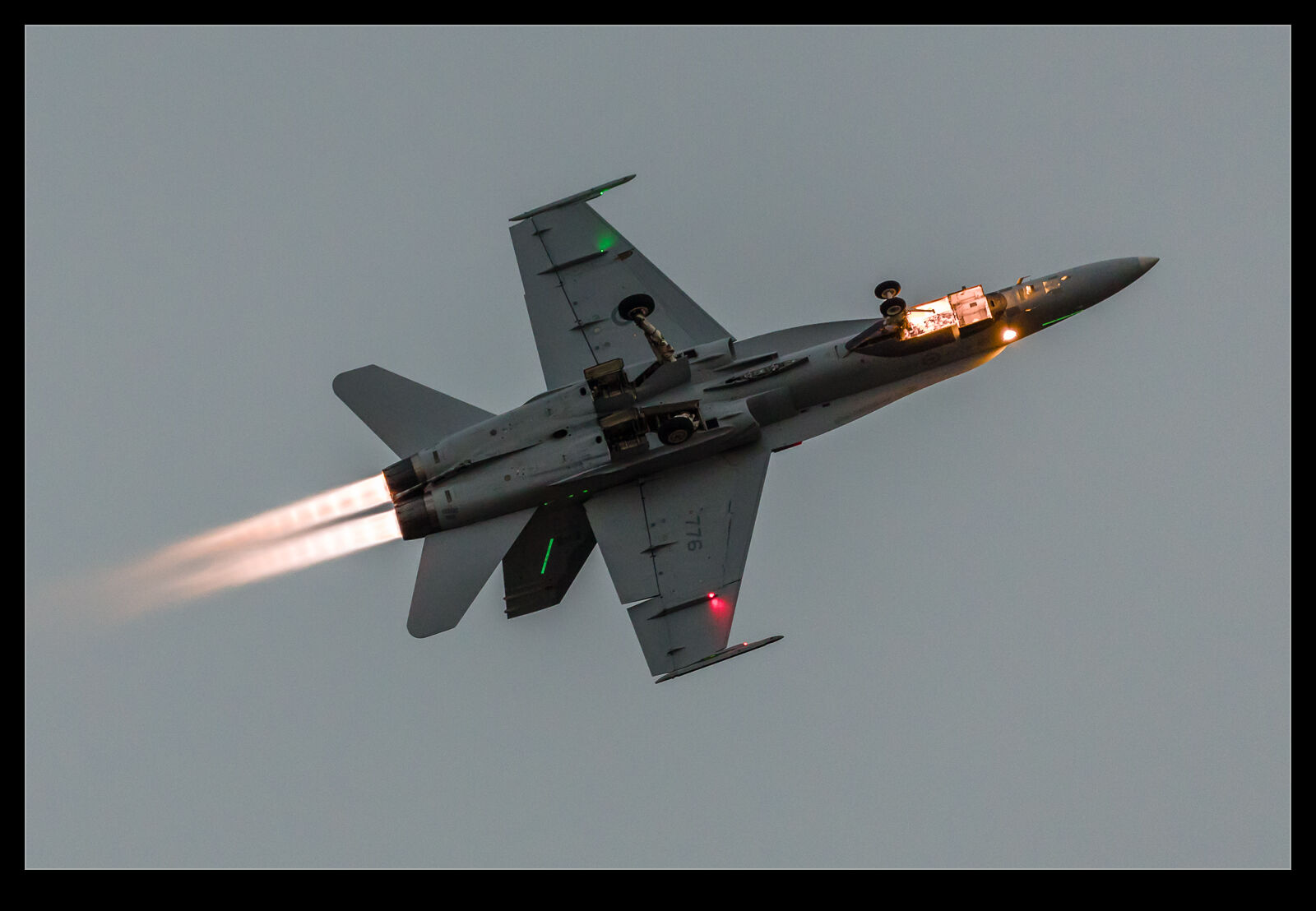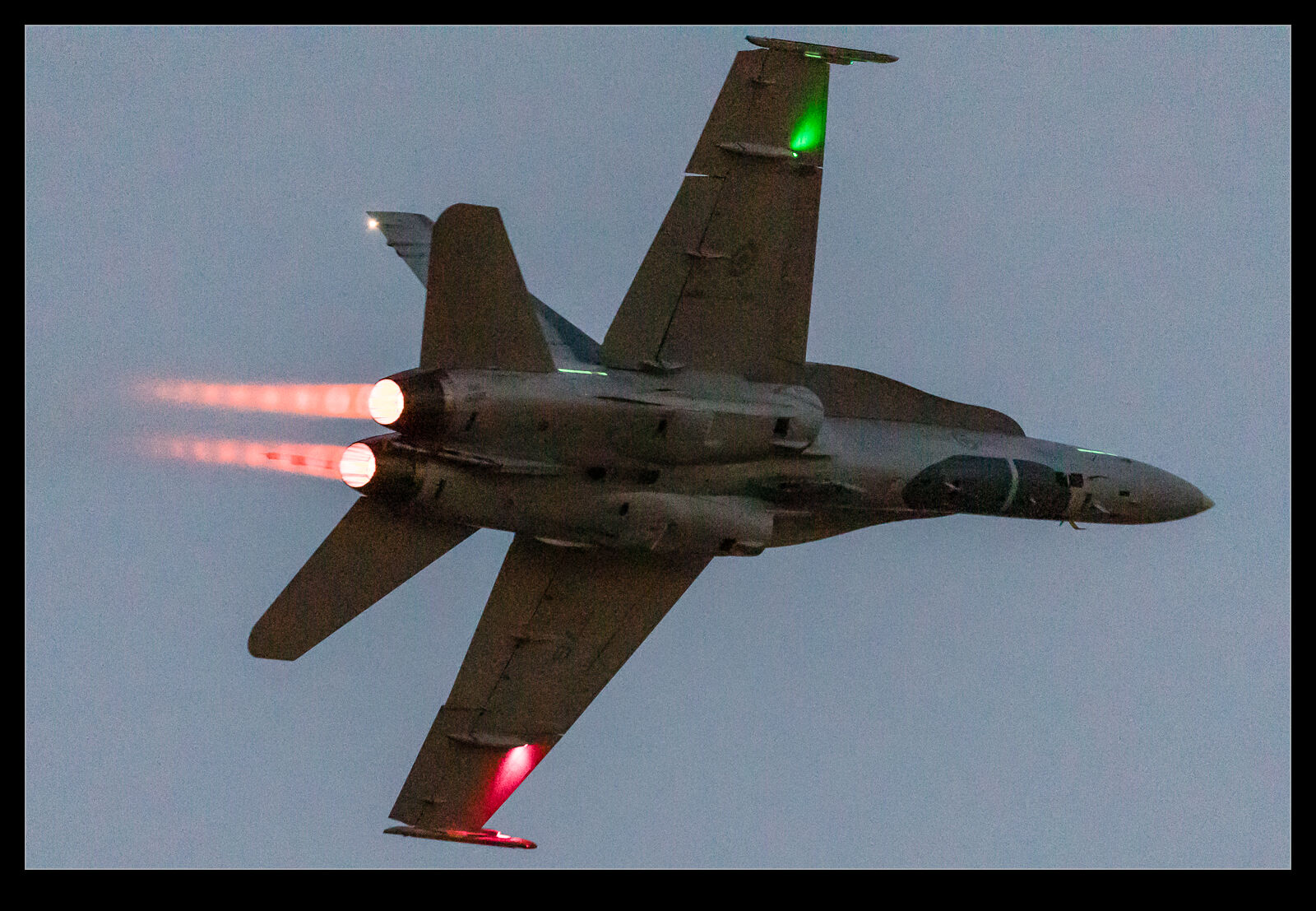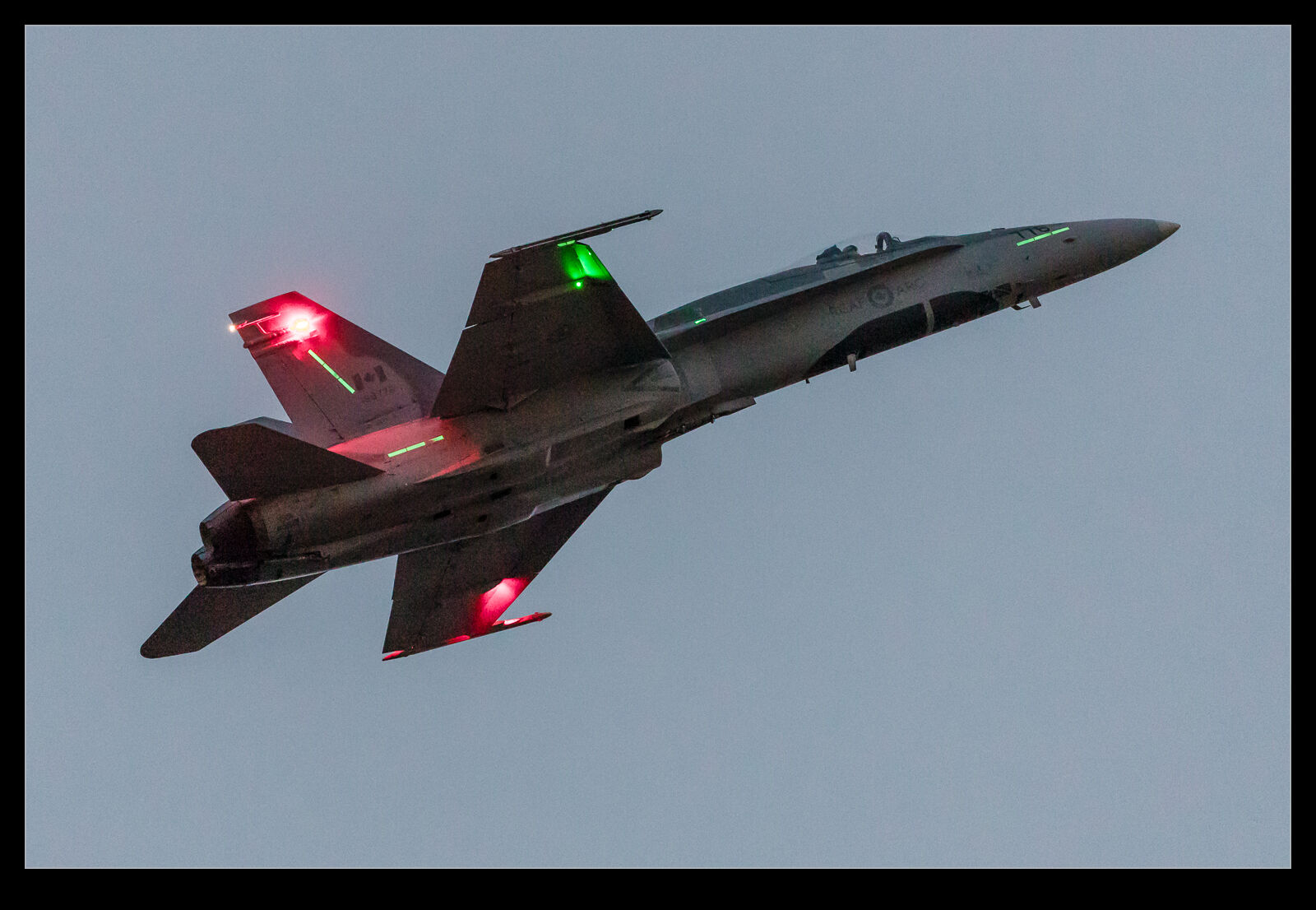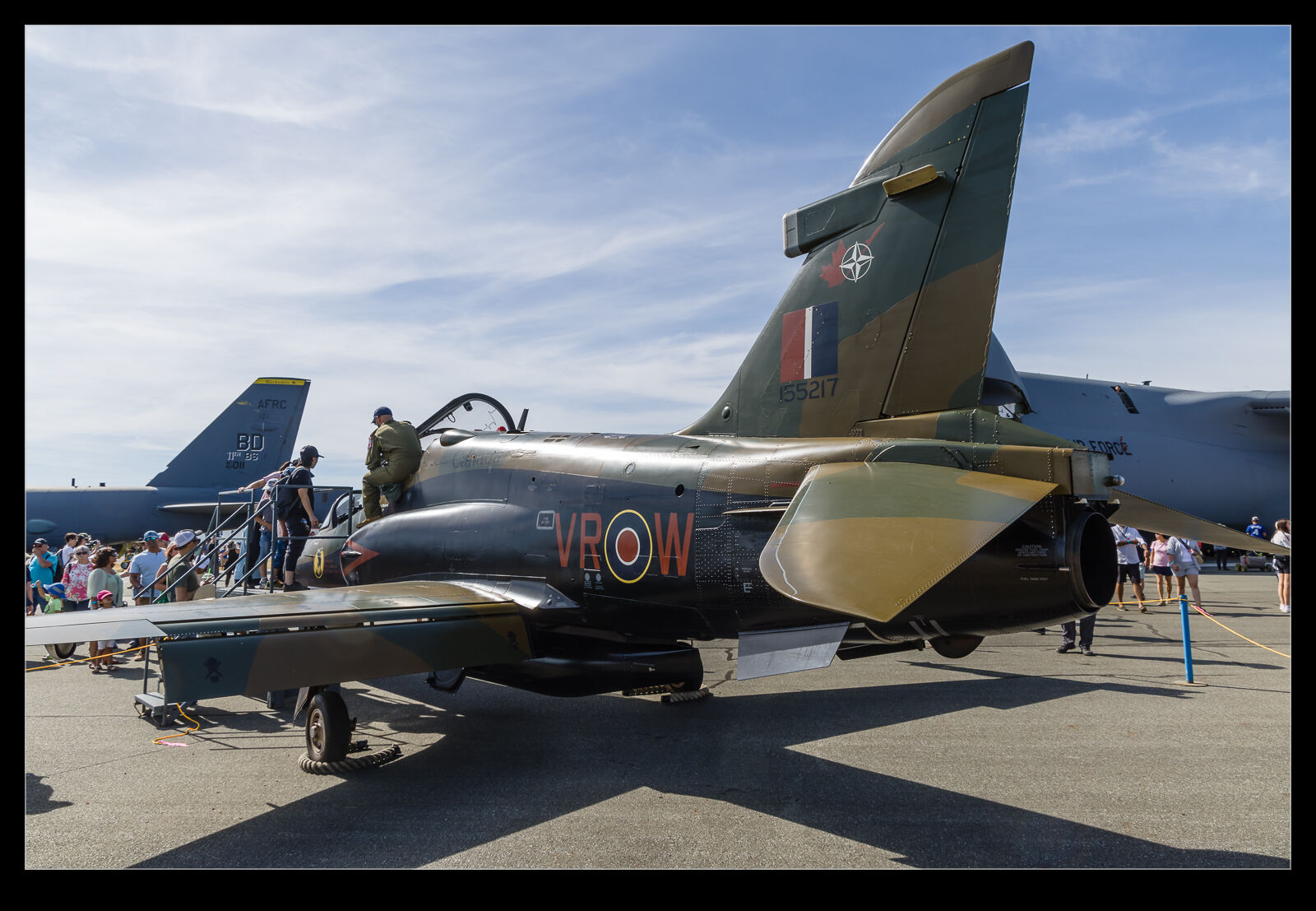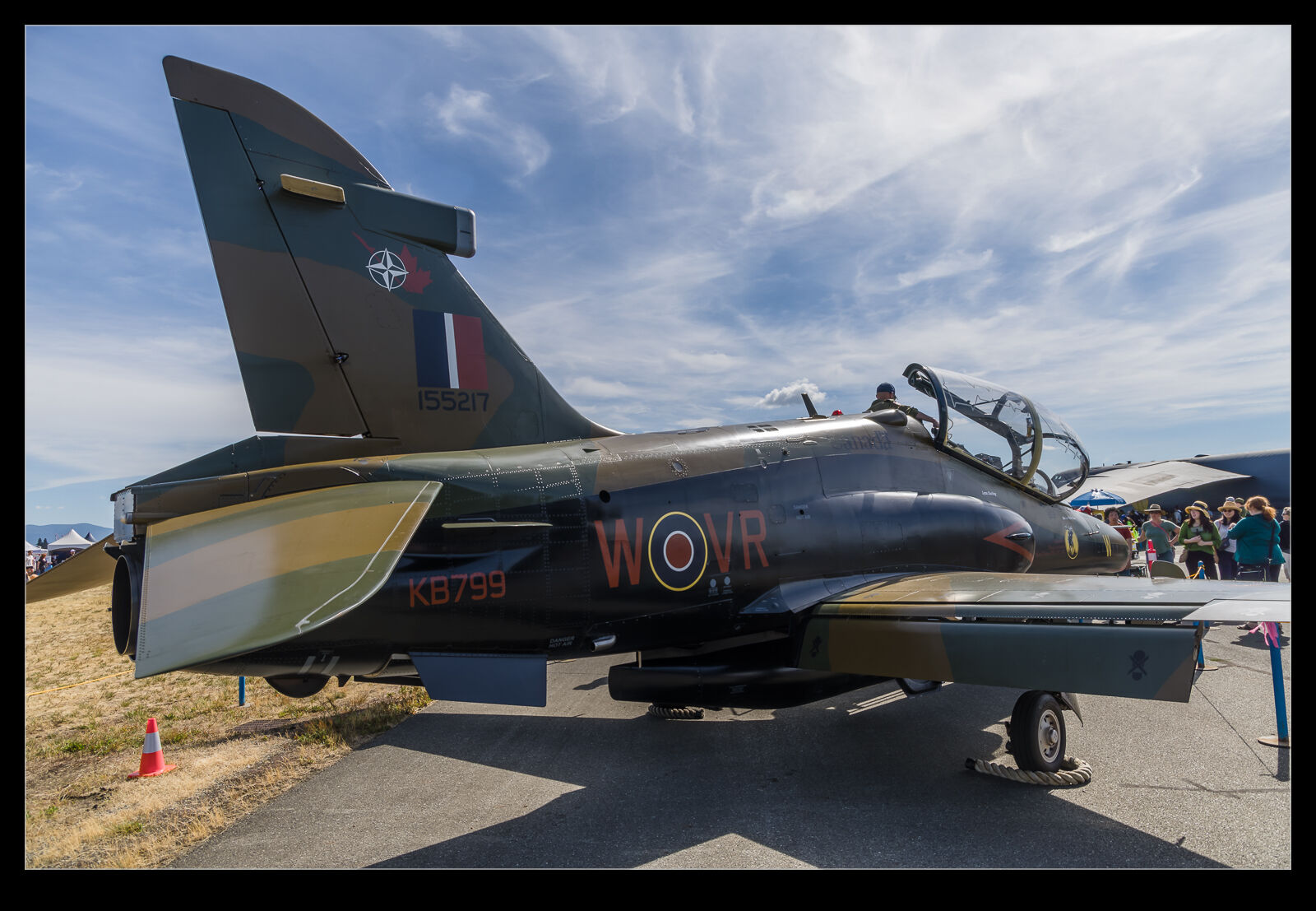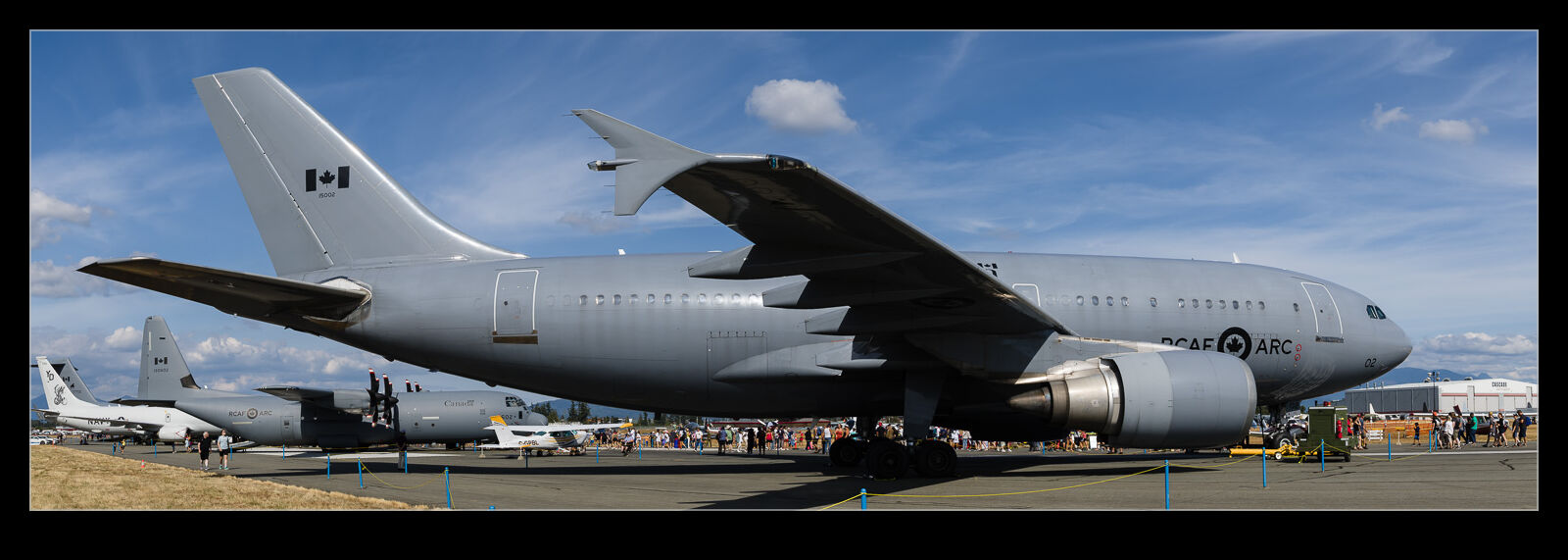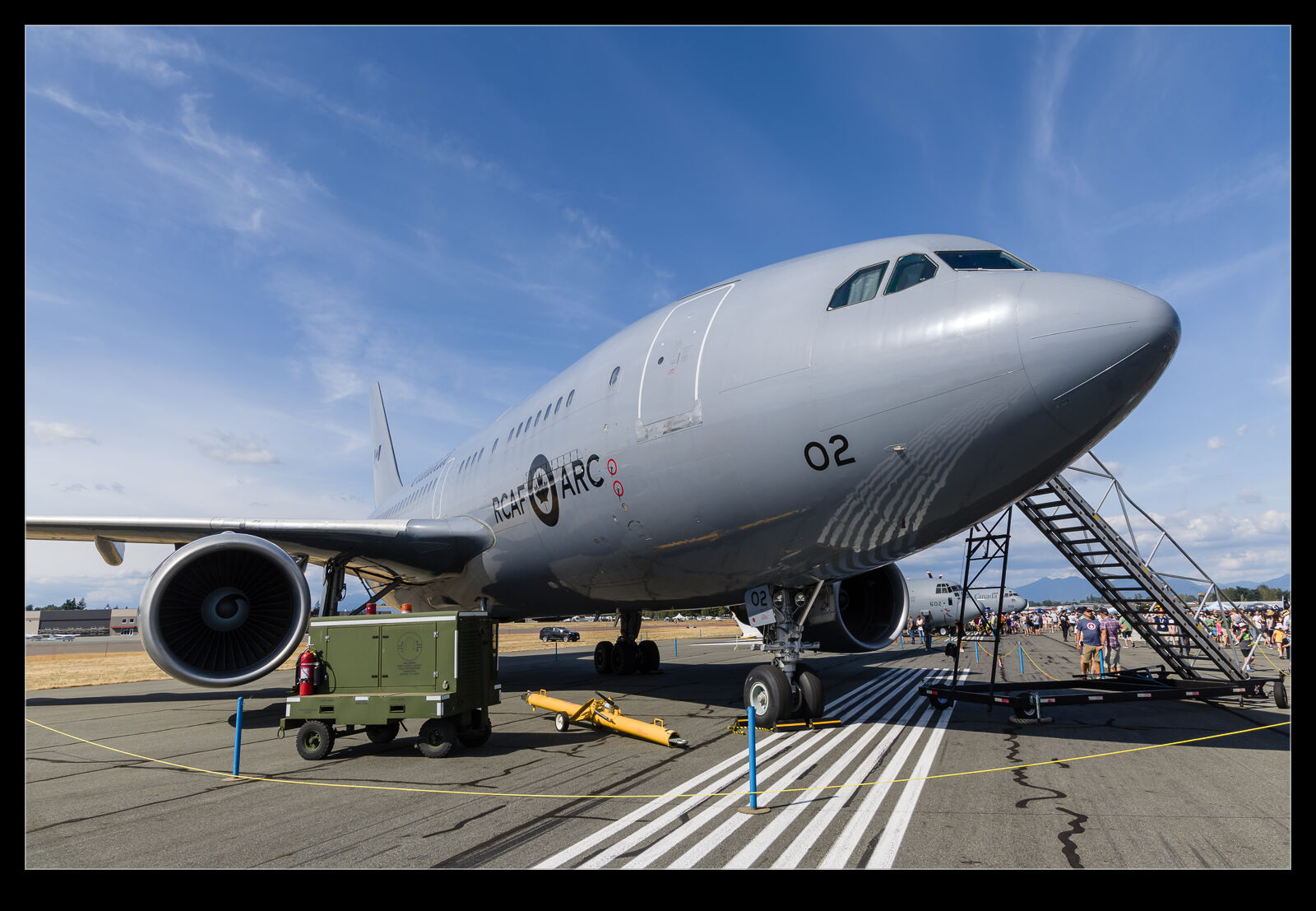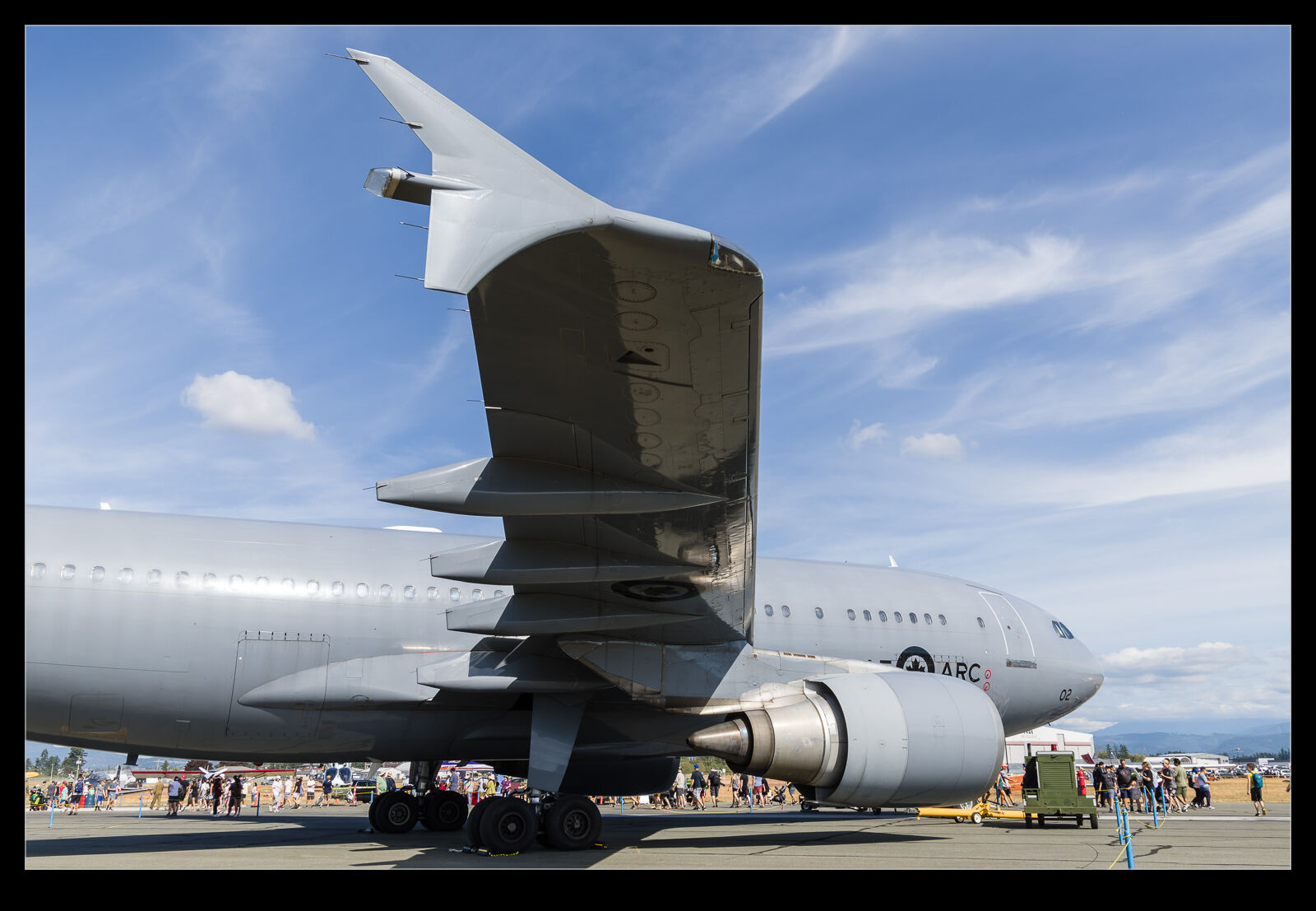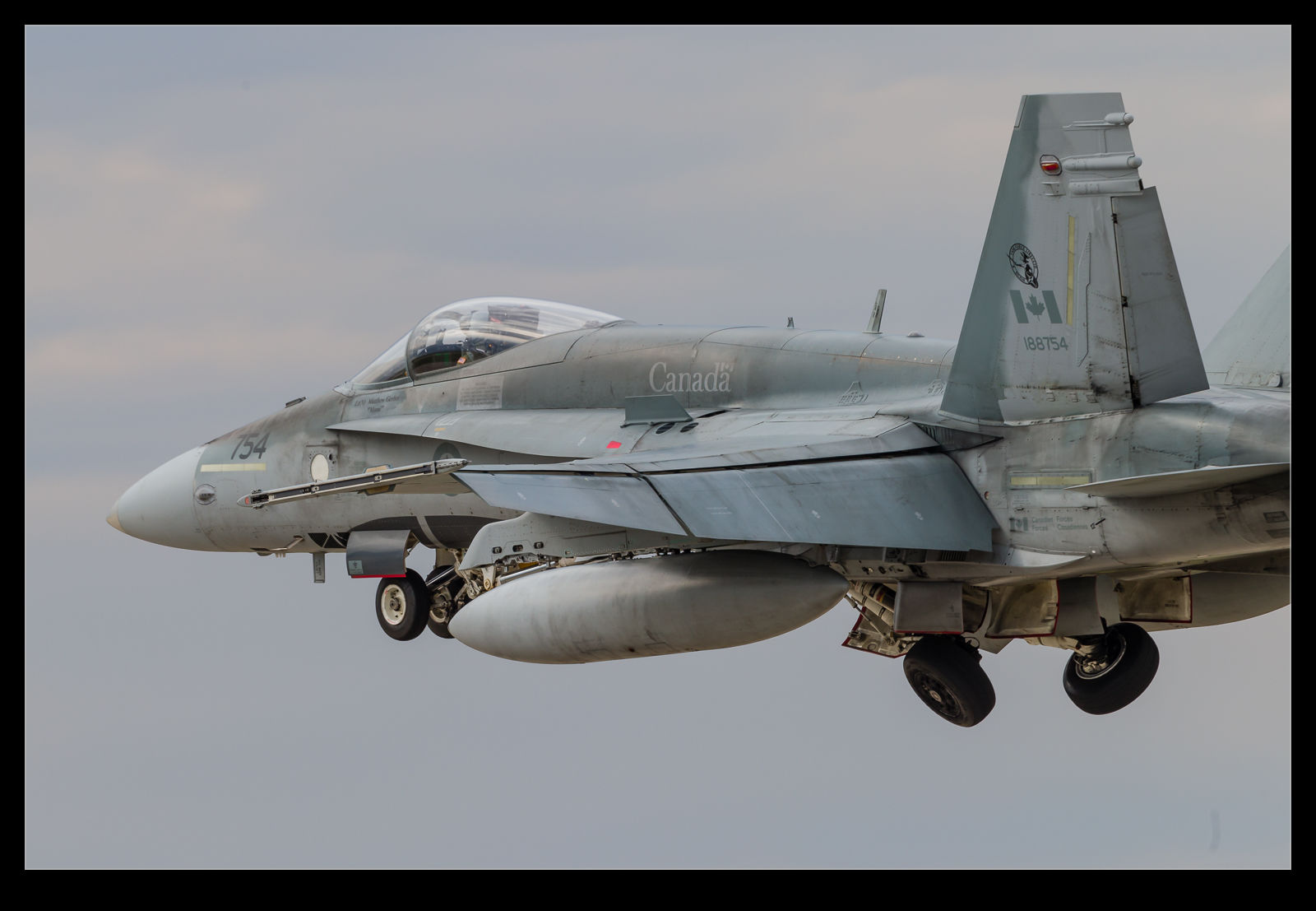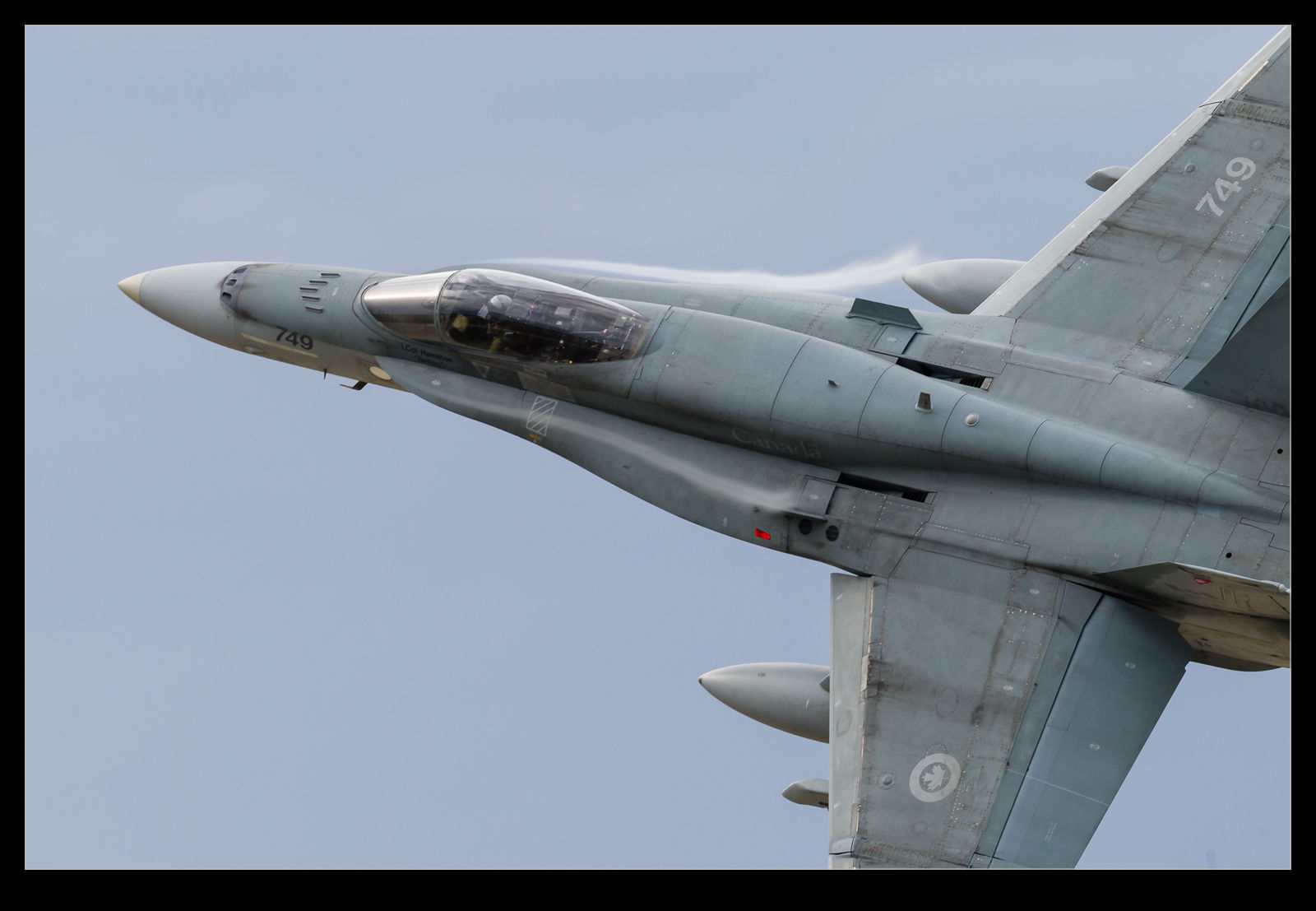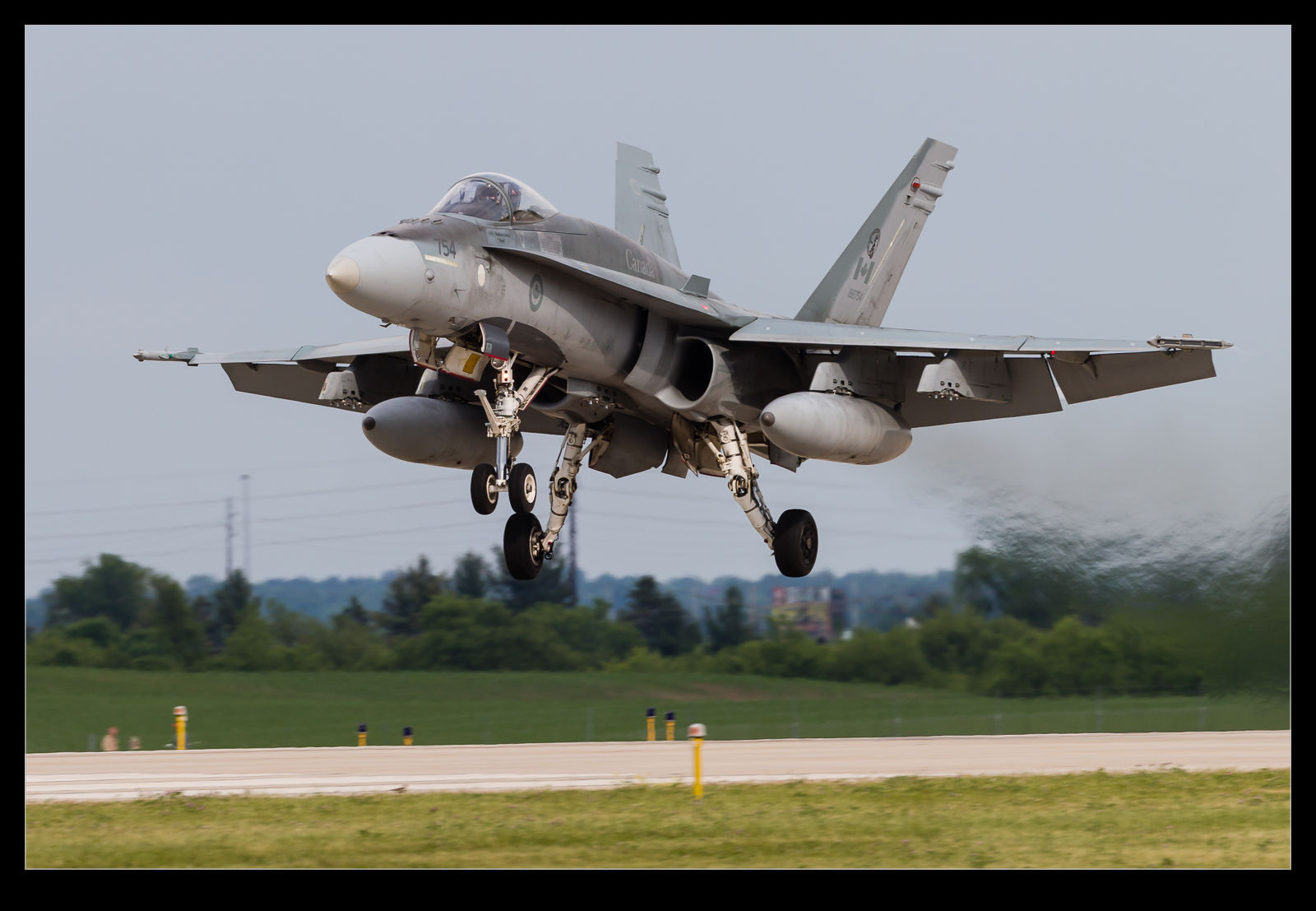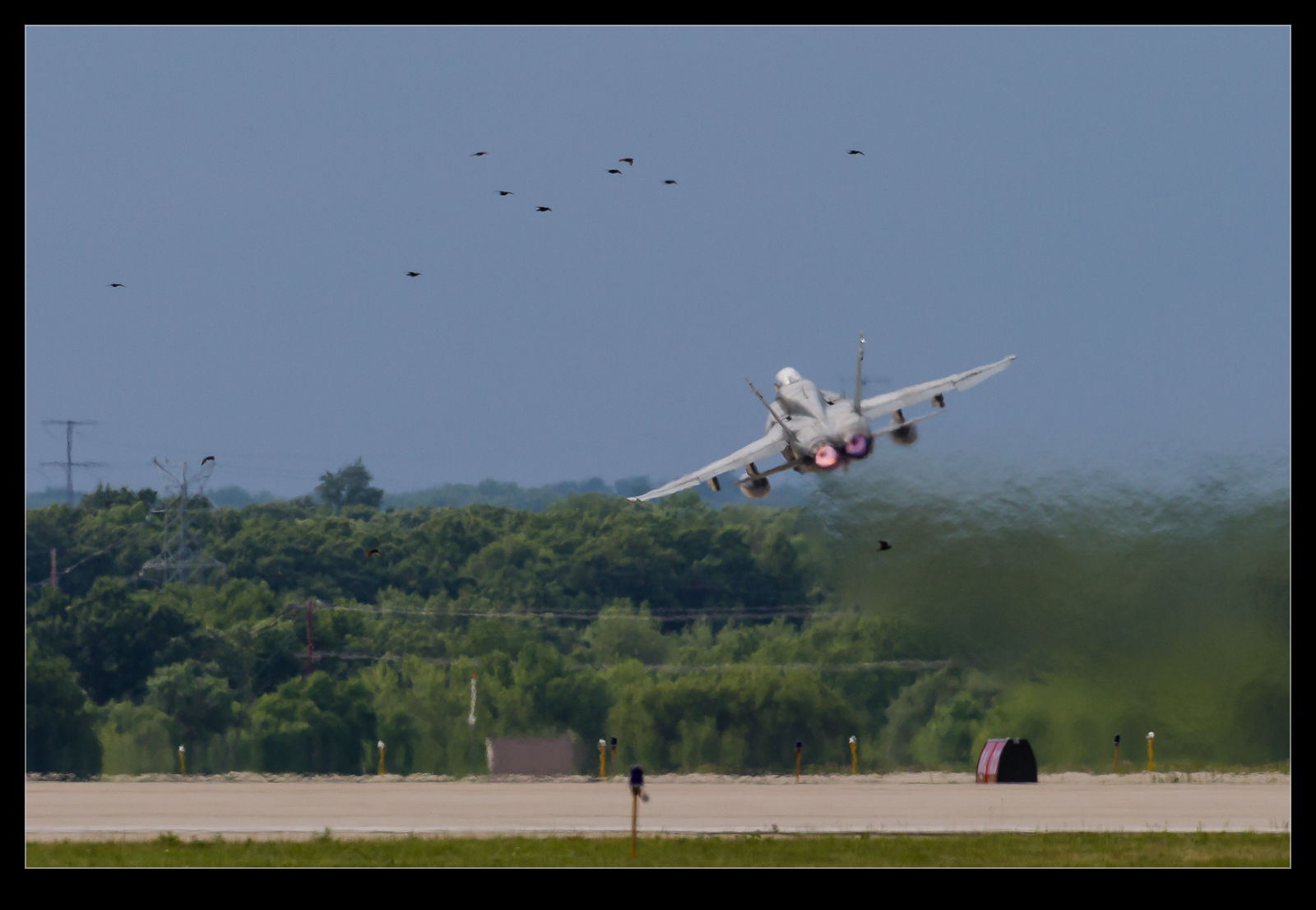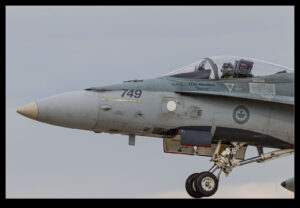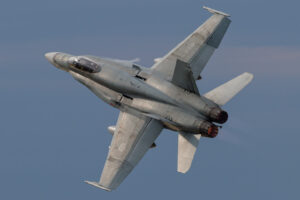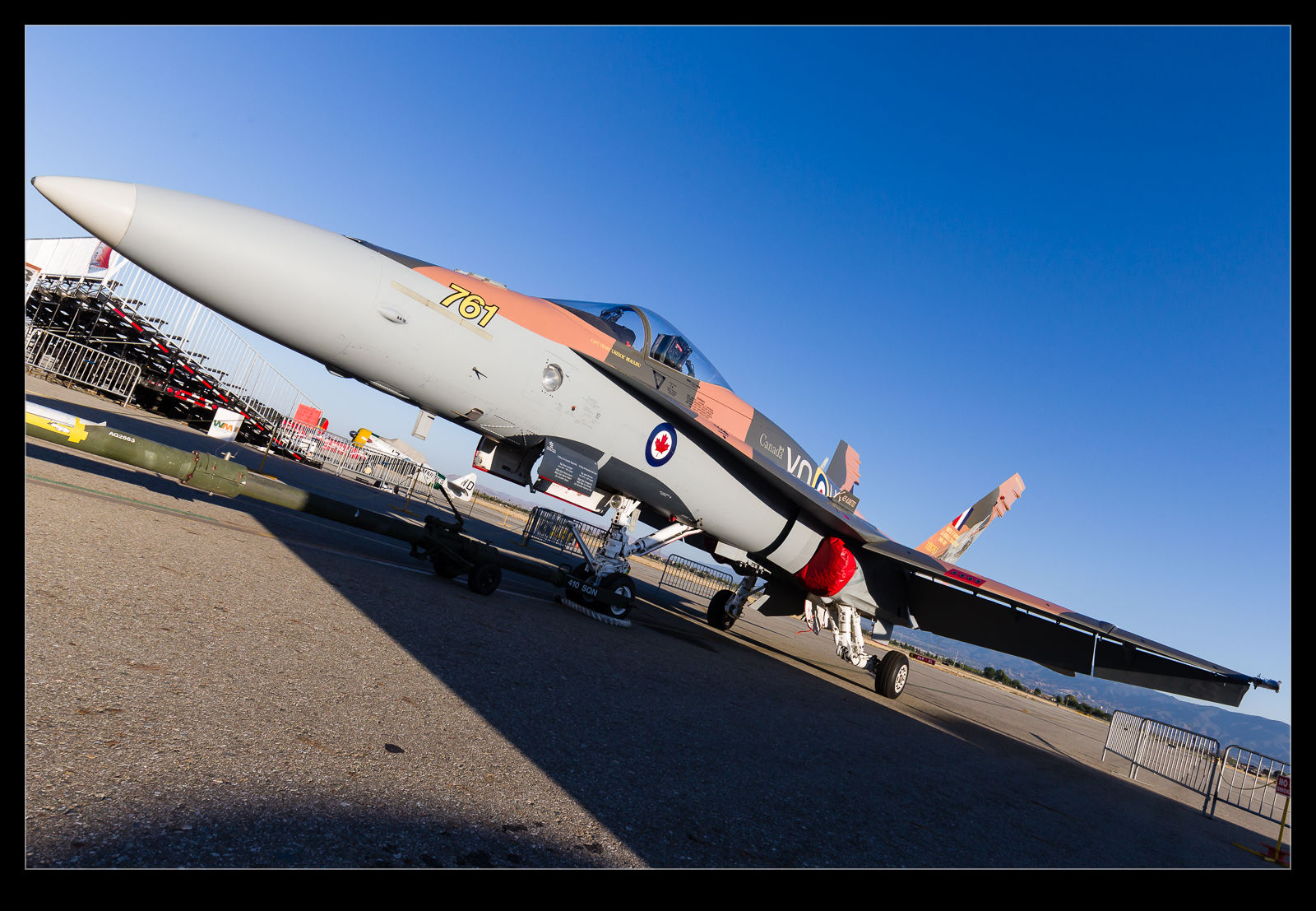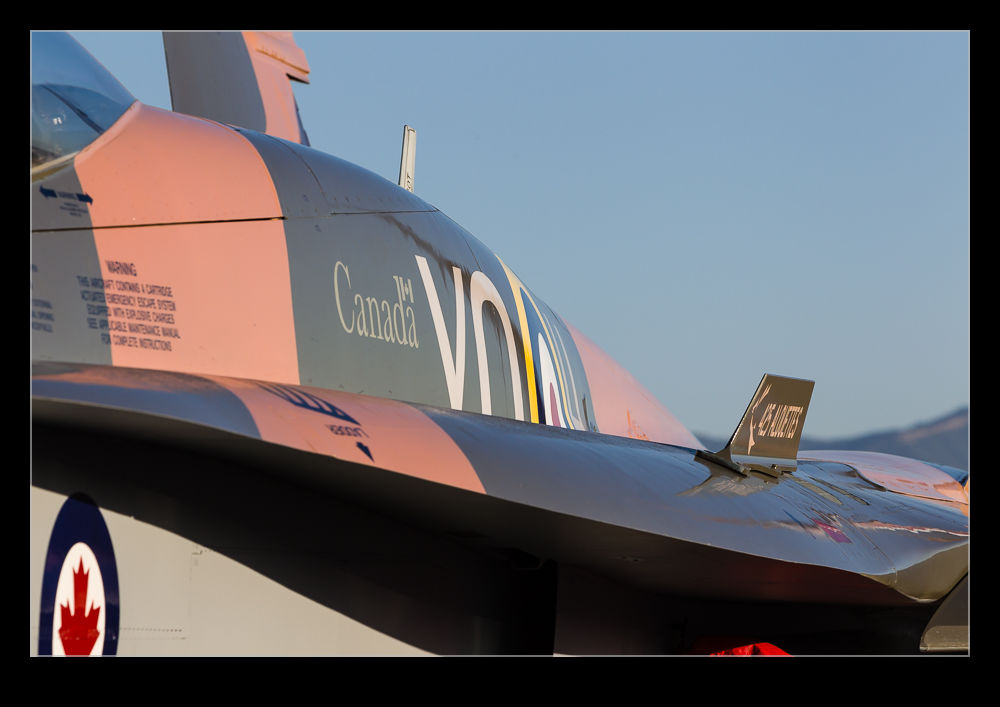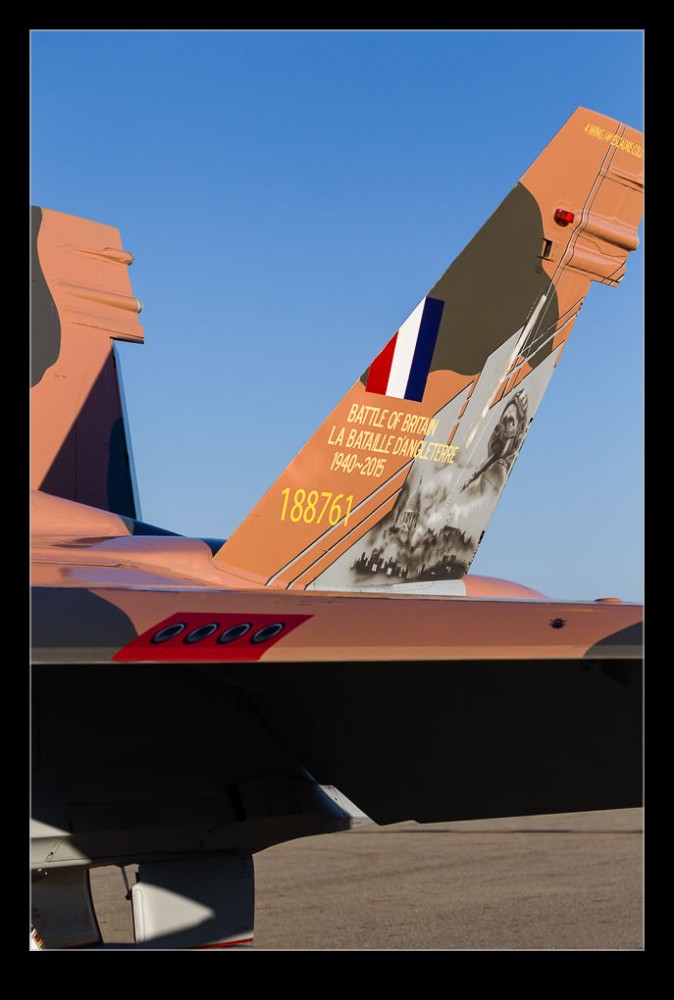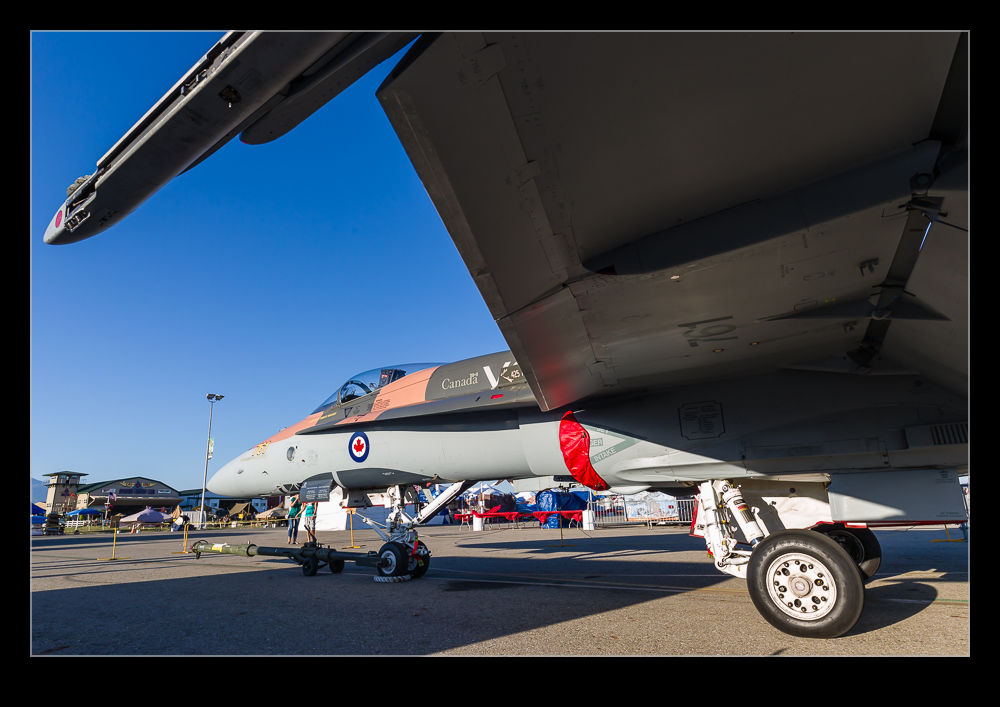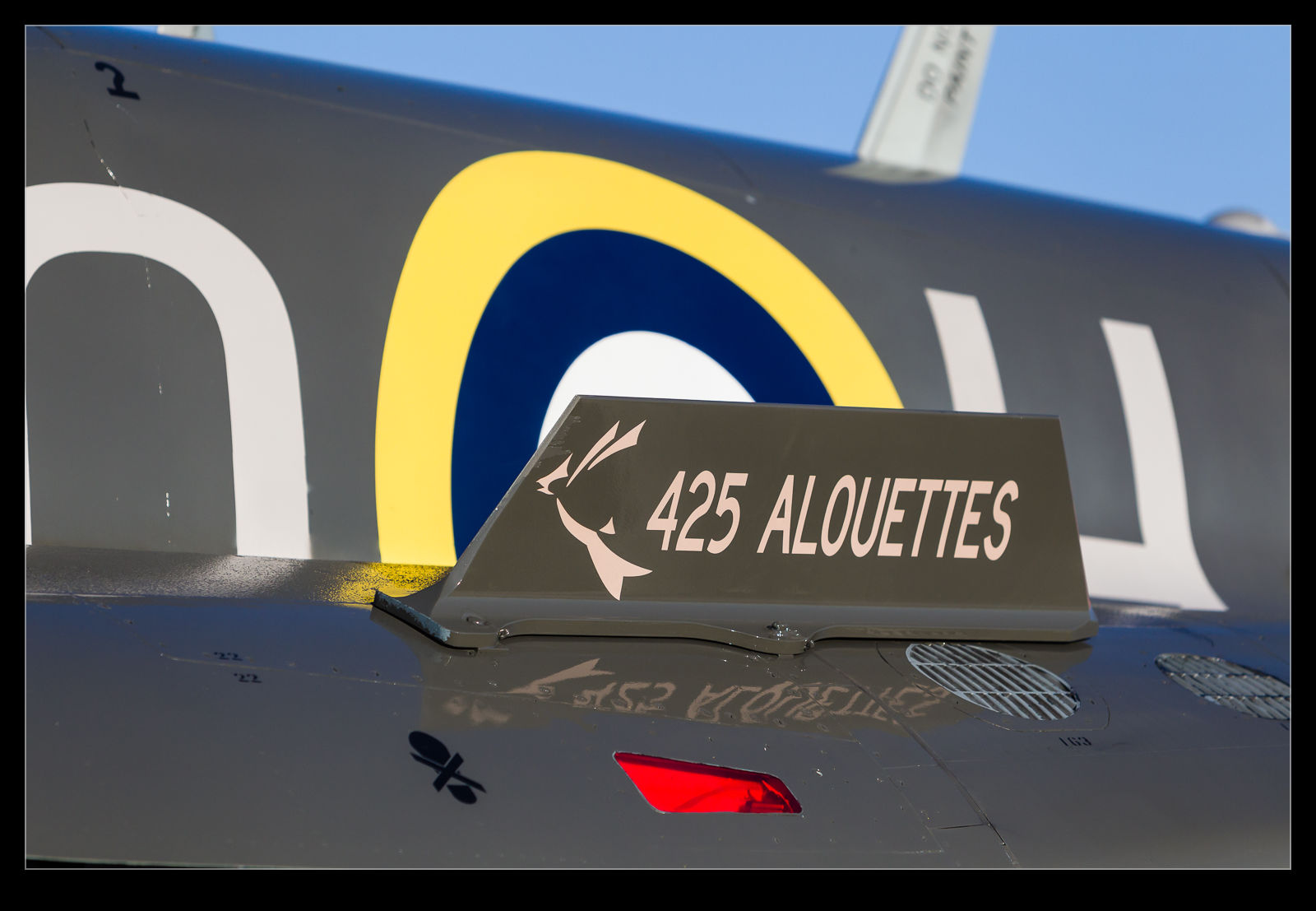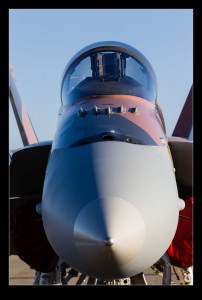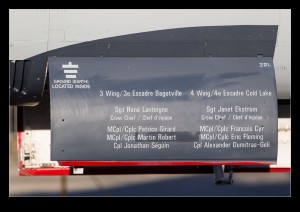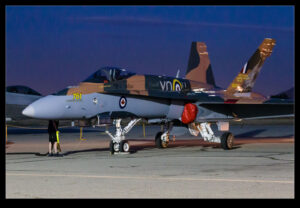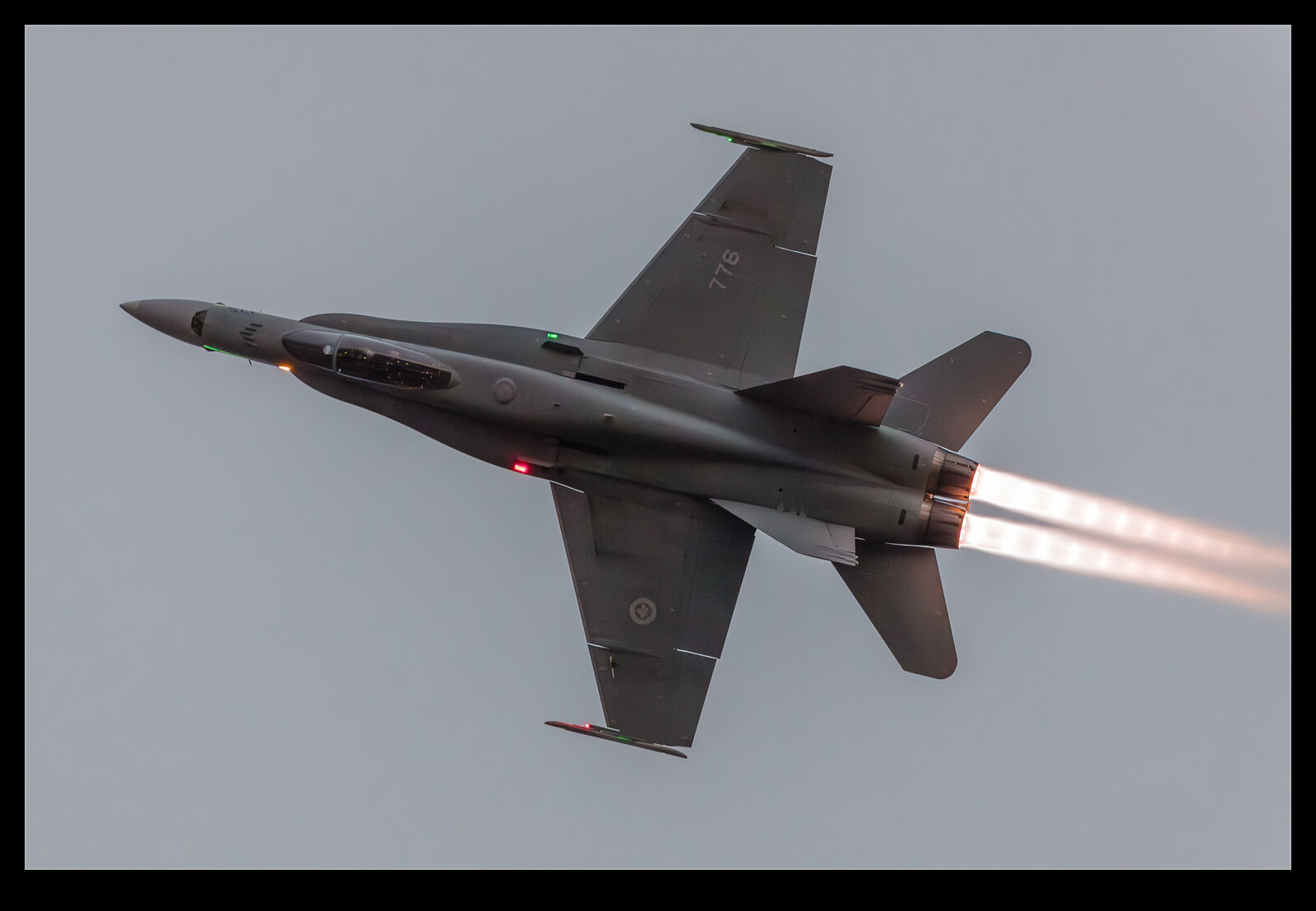 The later stages of the Abbotsford Air Show included a performance by the RCAF CF-188A Hornet. By the time it was performing, the light was pretty much gone. The late performance has some benefits in that the burners are more striking against a darker sky, but the RCAF display often ends with a landing with the hook lowered. I had seen this before at Chino and the same problem as happened there occurred here. The touchdown point was a long way away from the spectator line, so it was too far away to get a decent shot.
The later stages of the Abbotsford Air Show included a performance by the RCAF CF-188A Hornet. By the time it was performing, the light was pretty much gone. The late performance has some benefits in that the burners are more striking against a darker sky, but the RCAF display often ends with a landing with the hook lowered. I had seen this before at Chino and the same problem as happened there occurred here. The touchdown point was a long way away from the spectator line, so it was too far away to get a decent shot.
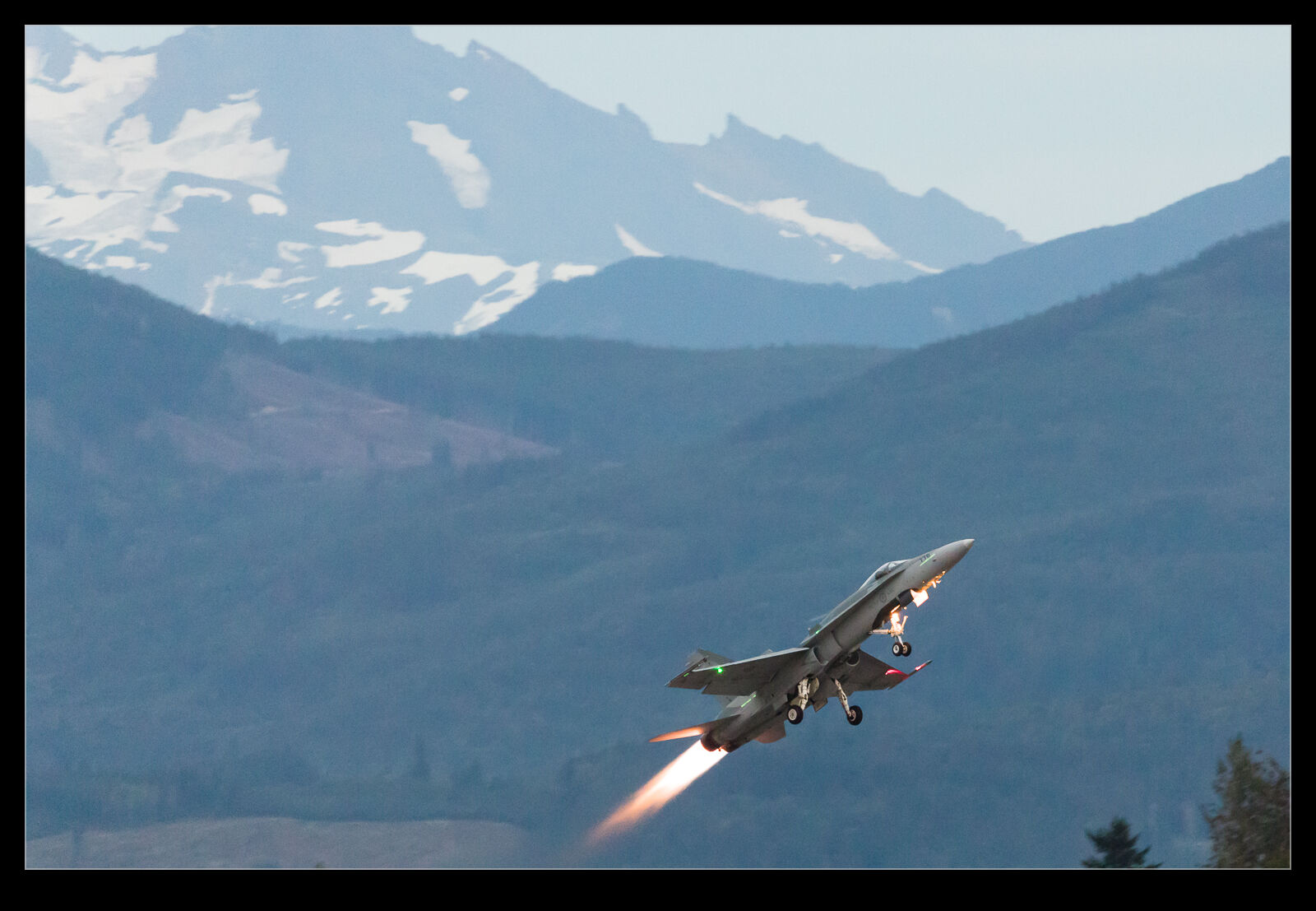 However, there was the rest of the display to go for. My current cameras seem very able to handle low light conditions. The focus might be a touch slower or less accurate as the light diminishes but I wasn’t noticing a significant problem. Also, the high ISO capabilities of current generation cameras are really impressive so shooting in such conditions is not necessarily a problem. The camera will be able to perform although that won’t compensate for a jet just not looking that good with so little light. You still have to pick your shots.
However, there was the rest of the display to go for. My current cameras seem very able to handle low light conditions. The focus might be a touch slower or less accurate as the light diminishes but I wasn’t noticing a significant problem. Also, the high ISO capabilities of current generation cameras are really impressive so shooting in such conditions is not necessarily a problem. The camera will be able to perform although that won’t compensate for a jet just not looking that good with so little light. You still have to pick your shots.
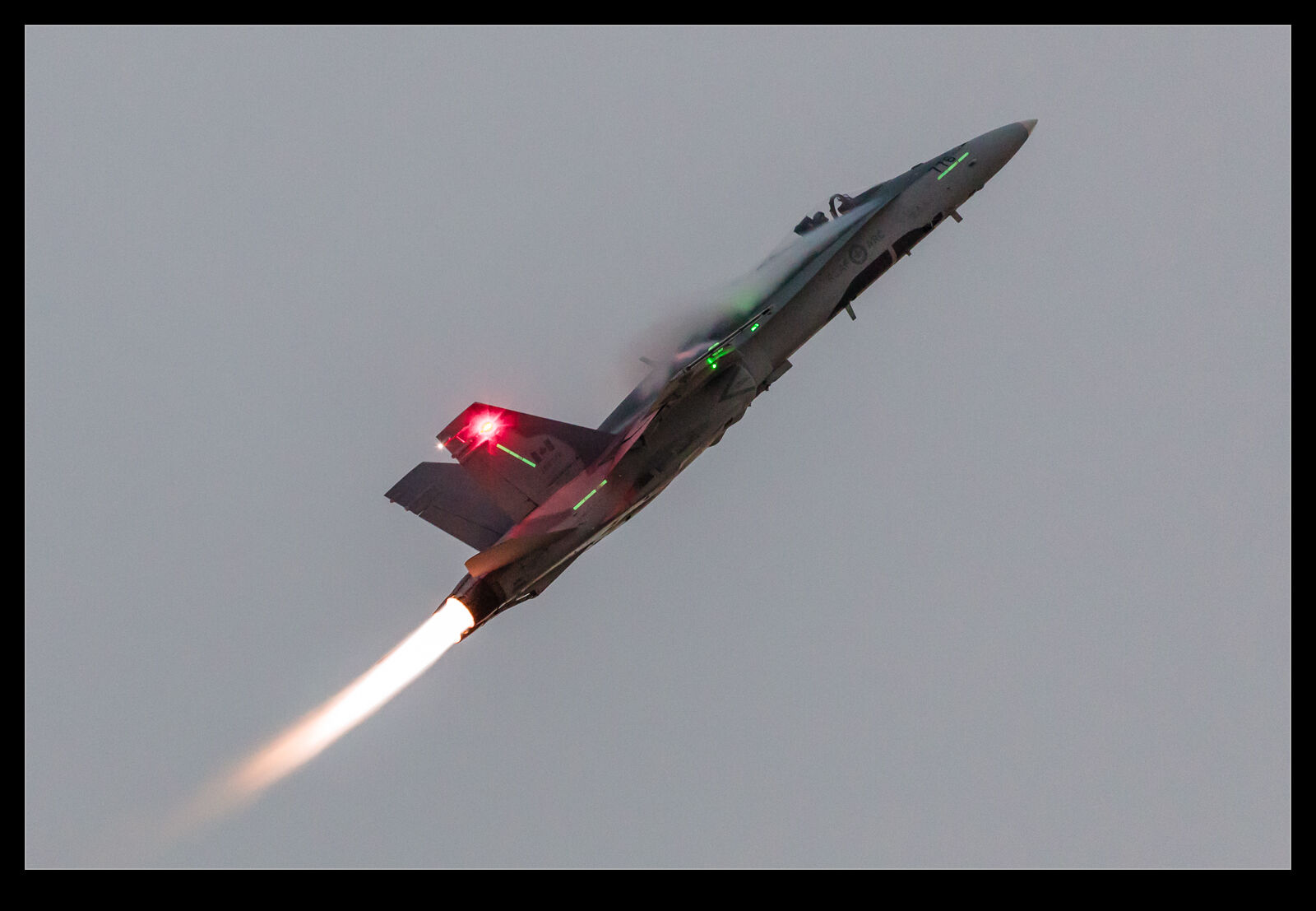 The Hornet is a good display jet with the ability to point the nose in different directions rapidly and to pull a decent amount of vapor from the air. It can turn and it can blast through, so it makes for a good show. Original generation Hornets are starting to become a rarity. It won’t be long before the Canadian jets have been replaced by F-35s. Other operators have already transitioned and more will follow. Catch the legacy Hornets while you can and, preferably, in interesting lighting conditions.
The Hornet is a good display jet with the ability to point the nose in different directions rapidly and to pull a decent amount of vapor from the air. It can turn and it can blast through, so it makes for a good show. Original generation Hornets are starting to become a rarity. It won’t be long before the Canadian jets have been replaced by F-35s. Other operators have already transitioned and more will follow. Catch the legacy Hornets while you can and, preferably, in interesting lighting conditions.
